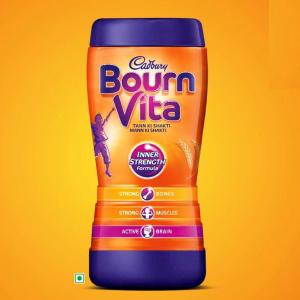How do you bring about better nutrition consciousness in a society that is quite apathetic to excess consumption of salt, sugar and fats? asks Ambi Parameswaran.

My colleague was crunching through a big bag of potato chips. When I tried cautioning him, he pooh-poohed saying he had studied the nutrition label and the chips were moderate in calorie content.
I had to get him to interpret the table better by looking at the 'per-serving' numbers and the 'total pack' numbers. Then the penny dropped.
Nutrition labels give two kinds of information, nutrition facts and ingredients.
Nutrition facts show us the amount of fat, cholesterol, sodium, calories, sugar, protein, minerals, vitamins etc.
The plot gets thicker when we see that there may be three tables presented: Total content of the pack (say 250 grams), per 100 gm values and per-serving values.
If we mistake the per-serving values for the whole pack, we may end up consuming a lot more than what we should.
The second type of information is about the ingredients that go into the pack, hydrogenated vegetable oil, high fructose corn syrup, soyabean oil, sugar, salt etc.
Do consumers really know how to read and interpret the two types of information?
What that potato chips story I narrated illustrates is that even a well-educated adult, working in a large communications agency, can get confused about how to interpret the nutrition information on packs.
The debate around health food labelling has gained traction after the recent issue between an influencer and a large multinational.
In a study covering a million consumers across 17 countries, it was found that there were broadly seven categories of consumers: Compensators (10 per cent), who were very conscious about dieting/weight loss; traditionalists (17 per cent), who feel healthy and have regular healthy habits but rarely exercise; Go for it guys (11 per cent), active young men who are very physique-conscious; carefree (15 per cent), young adults who are not into healthy eating but do a little bit of exercising; sports/beer/BBQ (13 per cent), older males who don't have a regular diet; indulgers (15 per cent), couch potatoes; and disengaged (19 per cent), the least interested in health or physical appearance.
It is likely that the last three segments totalling almost 50 per cent are least interested in nutrition information.
If we were to ignore these three, the question that arises is, 'How useful is the nutrition information for the other 50 per cent?'
The answer is not very clear. Is the information clear enough for the educated and concerned consumers?
And should all products be put through the same filter or should there be different guidelines for different products?
Today, all food products are subject to displaying the same set of information as 'nutrition facts'.
Consumers, definitely the 50 per cent who are nutrition-conscious, are aware that some products are bought for purely pleasure. And some are bought for health.
When developing products that are fun foods, it is likely the company is optimising for taste appeal.
Hence applying a yardstick developed for measuring the goodness of a health drink may be irrelevant when we use it to measure the qualities of a chocolate bar.
How do you then bring about better nutrition consciousness in a society that is quite apathetic to excess consumption of salt, sugar and fats?
Research has shown that designing more complete, comprehensible and detailed and potentially less deceptive information across a wide range of products has made available to consumers a lot of information that they can access before making a purchase.
But is it becoming an information overload?
What can be done to simplify this, given lifestyle diseases like diabetes are galloping ahead?
There has been some movement towards simplifying nutrition labelling using the HFSS (high fat, sugar, salt) scale.
A simple 'star rating' has been mooted à la electrical goods. But there has been some pushback from foods that are sold purely on the basis of enjoyment.
Manufacturers are worried that a one-star rating on a soan papdi pack may discourage consumers from buying the product. There may be some truth to this worry though.
The overall objective of any nutrition labelling should not be to cause scare but to sensitise the consumer about the dangers of excess consumption.
Anything in excess is bad (even drinking too much water could cause electrolyte imbalance).
Hopefully, a simple system can nudge and sensitise consumers towards controlling binge eating.
There is then the other side of the coin. What can be allowed as claims?
This will need to be regulated based on the category that the product falls in. The rules will have to be more stringent for a product that falls in the category of a nutritional supplement or health food.
Michael Pollan has an interesting quote in his book In Defense of Food: An Eater's Manifesto -- 'Eat food. Not too much. Mostly plants and not anything that your great grandmother would not see as food.'
All said and done, we need to give credit to the consumer's ability to decode and interpret advertising and packaging claims.
We saw around 50 per cent are least interested in all this nutrition information but there is the other 50 per cent.
The new system should first help them by simplifying the information overload. Then we can go after the other 50 per cent.
Ambi Parmeswaran is a brand strategist, author and founder of Brand-Building.com
Feature Presentation: Ashish Narsale/Rediff.com










